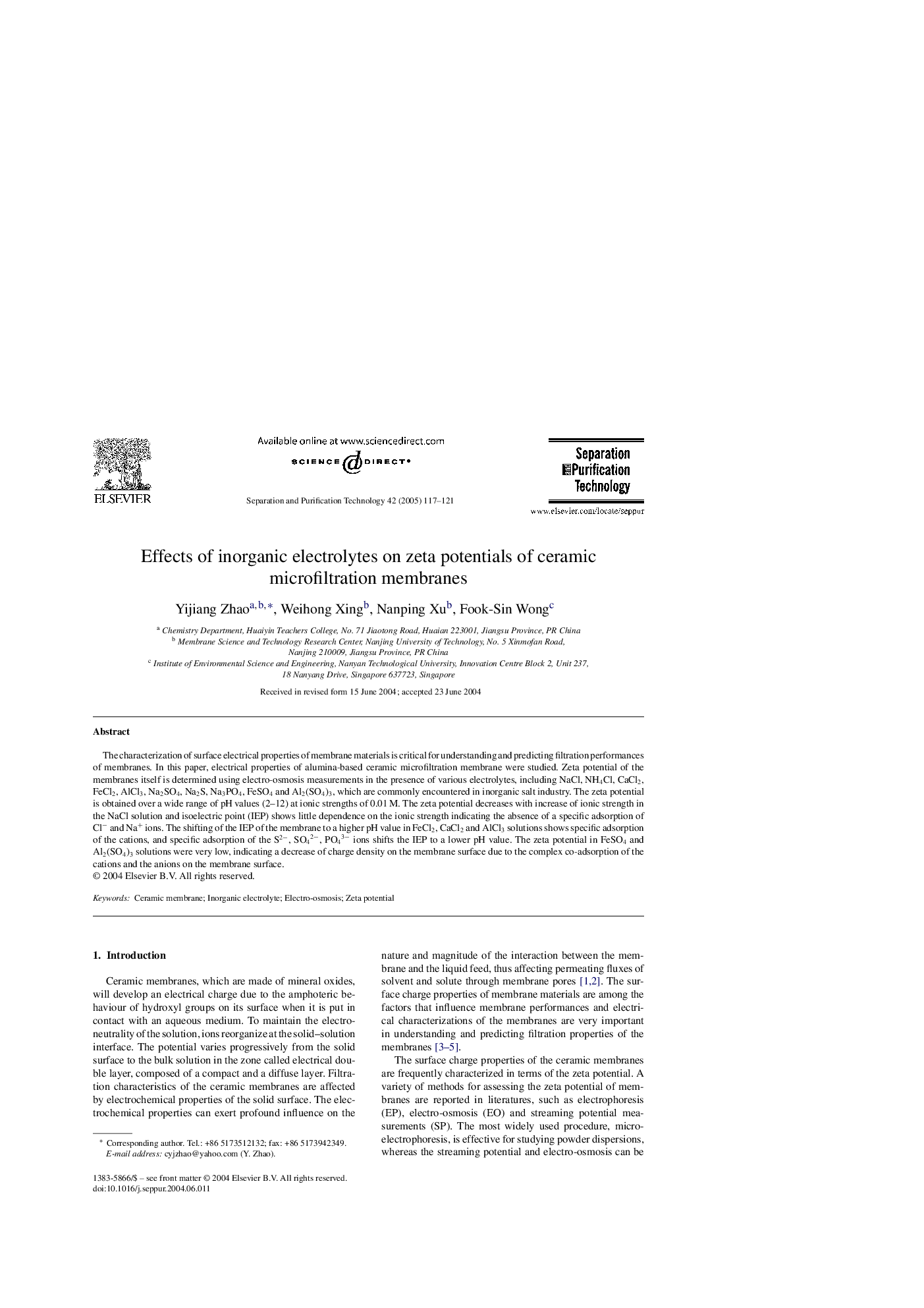| Article ID | Journal | Published Year | Pages | File Type |
|---|---|---|---|---|
| 10389866 | Separation and Purification Technology | 2005 | 5 Pages |
Abstract
The characterization of surface electrical properties of membrane materials is critical for understanding and predicting filtration performances of membranes. In this paper, electrical properties of alumina-based ceramic microfiltration membrane were studied. Zeta potential of the membranes itself is determined using electro-osmosis measurements in the presence of various electrolytes, including NaCl, NH4Cl, CaCl2, FeCl2, AlCl3, Na2SO4, Na2S, Na3PO4, FeSO4 and Al2(SO4)3, which are commonly encountered in inorganic salt industry. The zeta potential is obtained over a wide range of pH values (2-12) at ionic strengths of 0.01Â M. The zeta potential decreases with increase of ionic strength in the NaCl solution and isoelectric point (IEP) shows little dependence on the ionic strength indicating the absence of a specific adsorption of Clâ and Na+ ions. The shifting of the IEP of the membrane to a higher pH value in FeCl2, CaCl2 and AlCl3 solutions shows specific adsorption of the cations, and specific adsorption of the S2â, SO42â, PO43â ions shifts the IEP to a lower pH value. The zeta potential in FeSO4 and Al2(SO4)3 solutions were very low, indicating a decrease of charge density on the membrane surface due to the complex co-adsorption of the cations and the anions on the membrane surface.
Related Topics
Physical Sciences and Engineering
Chemical Engineering
Filtration and Separation
Authors
Yijiang Zhao, Weihong Xing, Nanping Xu, Fook-Sin Wong,
